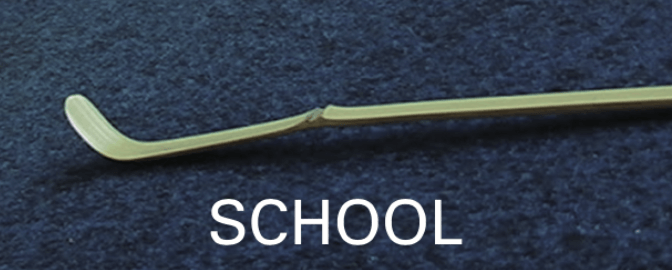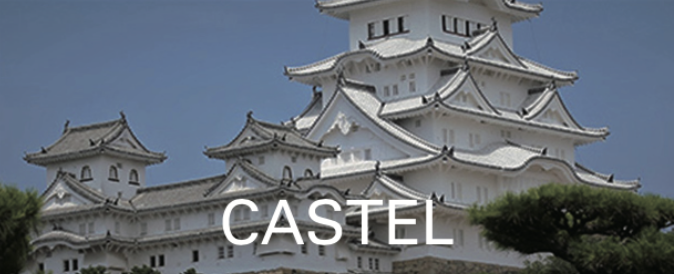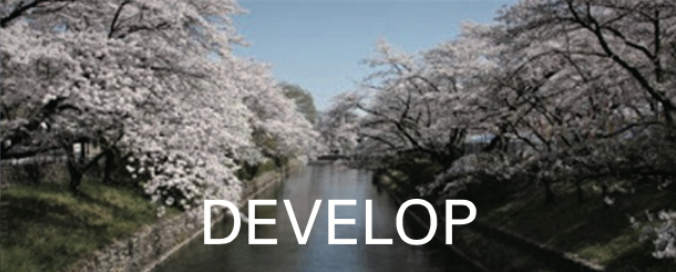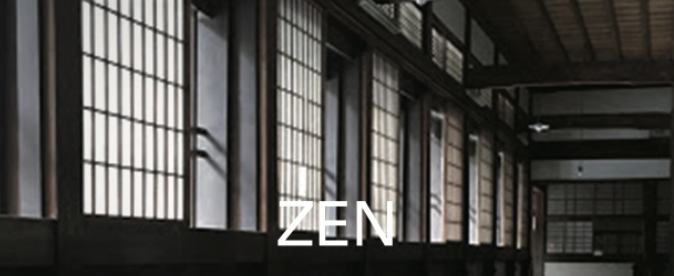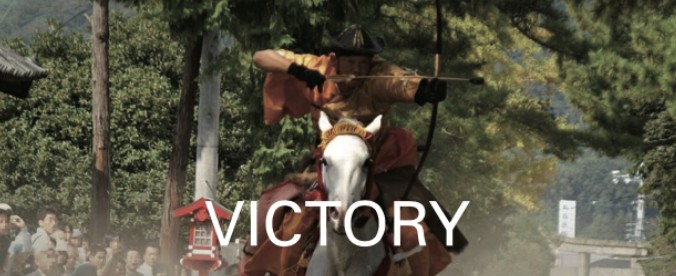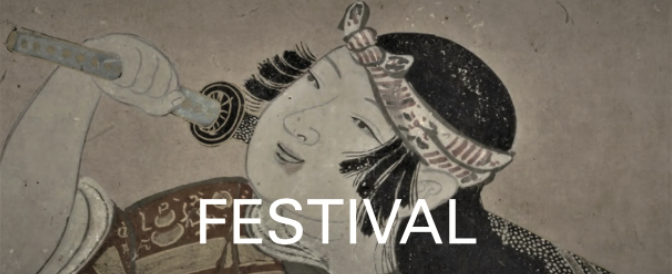
Ayabe is a place where culture has taken root since ancient times. Ashikaga Takauji (1305 – 1358), the founder of the Ashikaga Shogunate, was born in Uesugi-so Villege, Ayabe. The temple remains his maternity room and the wells for the baby’s first bath for him. This temple was the foremost head of the Ankokuji Temple and Rishou-to Pagodas to perform the salvation of a departed soul of Emperor Go-Daigo (1288 – 1339) and the emperor’s retainers, in the period of the Northern and Southern Courts (1336 – 1392).
The principle image of this temple is the sedentary statue of the Buddha triad, Buddha attended by two Bosatsus, which was made with Gyokugan, eyes made of crystal, and high quality. The decent appearance of the statue of Buddha is characteristic of the Kamakura period (1185 – 1333).
It is a masterpiece engraved by a Japanese sculptor of Buddhist statues, Goen of Enpa, En school for sculpturing Buddhist images, in 1341.
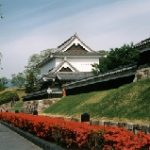
The sites of Shoryuji Castle became a Park with an exhibition room, Yagura, turret and a garden after the investigation of the historic site. Hosokawa Fujitaka Yusai (1534 – 1610) was appointed by Oda Nobunaga (1534 – 1582), the legendary warlord and the military dictator, to be the lord of Shoryuji Castle.
He was a retainer of the Last Ashikaga shogunate and became a feudal lord under Oda Nobunaga (1534 – 1582). His son, Hosokawa Tadaoki (1563 – 1646), a feudal lord, the eldest son of Hosokawa Fujitaka Yusai, had a wedding ceremony at this castle with Tama Garasha (1563 – 1600), who was the daughter of Akechi Mitsuhide (1528 – 1582) a feudal lord, a general under Oda Nobunaga (1534 – 1582), the legendary warlord and the military dictator, and raised in rebellion against Nobunaga in 1582.
The decisive battle between Mitsuhide and Toyotomi Hideyoshi (1537 – 1598), the powerful feudal lord and Imperial Regent who unified Japan, took place in Yamazaki near this castle. Yusai who declined Mitsuhide’s call for reinforcements, shaved his head and become a Buddhist priest, handed over their family estate to Tadaoki, and left this castle. Tama was divorced and imprisoned. She became a Christian convert.
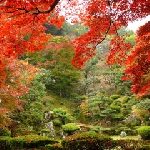
This temple is the family temple of Sasaki Kyogoku clan, which was a descendant of Omi-Genji (Minamoto clan) from Emperor Uda (867 – 931). This temple was built in 1283 by Kyogoku Ujinobu (1220 – 1295), the founder of the Kyogoku clan. 34 Hokyoin-to, a Buddhist pagoda used as a tomb and memorial tower are spectacular, each of which spans from Ujinobu to generations, as centered Kyogoku Takatsugu (1560 – 1609), a Japanese feudal lord, and the 19th head of the Kyogoku clan, who married Hatsu Hime, Jokoin, one of three daughters of Asai Nagamasa (1545 – 1573), a Japanese feudal lord.
The garden is a typical early Edo style with a pair of waterfalls, resembling the landscape of Mt. Kiyotaki of Shatsukei. It was said to be made by Kobori Enshua (1579 – 1647), a feudal lord, a master of the tea ceremony, an architect and garden designer. The taste of the garden changes greatly in the four seasons, and the expression changes in the morning, afternoon, and evening.

This shrine is Harimanokuni Sosha, deducted to several gods in Harima Province, which is an old shrine and is located at the inside of the former Himeji Castle. Enshrined here are Itate Okami, Isotakeru, the eldest son of Susano no mikoto, the powerful god in Japanese mythology and the God of planting trees. Hyozuno Okami, Onamuchi no kami, Okuninushi no kami, the son-in-law of Susano-no-Mikoto, the younger brother of Amaterasu Oomikami: Sun Goddess and mythical ancestress of the Japanese imperial line, and a local deity linked with the harvest and agriculture, and the ruler of Izumo Province, the God of building nations.
This shrine had been devoutly worshiped by the successive lords of Himejijo Castle. Himejijo Castle was built at Himejioka, where Divine servants lived and where the Himeyama virgin forest was. The enshrinement of Harimanokuni Sosha in Himejijo Castle made it the authentic center of Harima Province.
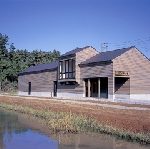
At the Historic Site Square, the earthen walls, Kenmotsu moat, built by Hori Naomasa Kenmotsu (1547 – 1608) a feudal lord, the road and the pillar building were reconstructed, based on the results of excavation investigations. Kasugayamajo Castle in the middle age was brought to mind by those.
The Kasugayamajo Castle Story Museum adjacent to the Square, introduces Uesugi Kenshin (1530 – 1578), the feudal lord of Echigo Province, and the Castle view at the time by large-screen videos. This museum exhibits the folding screen drawing Battles of Kawanakajima and other items with the videos.
You can see the ruins of Kasugayamajo Castle from the observation room on the second floor.
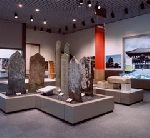
The Hachisuka clan entered Awa Province Tokushima from Tatsuno Harima Province Hyoto, after the Shikoku Conquest in 1585 by Toyotomi Hideyoshi (1537 – 1598), the powerful feudal lord and Imperial Regent who unified Japan. They established the economy by monopolizing special products. Ai, indigo produced in the Yoshino River basin were shipped nationwide as an Aidama, an indigo ball to be used as a dye.
Nigyo Joruri, a Japanese puppet show, was created at Nishinomiya Shrine, incorporated with Shamisen, a three-stringed Japanese lute in Ryukyu Province, Okinawa. It was spread to Awajishima Island, supported by the economic power of the Hachisuka clan and merchants of indigo.
Nigyo Joruri grew to be a powerful acting style in Awa Province Tokushima.
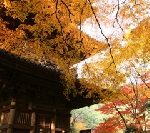
This temple, is located 100-300m above sea level at the eastern foot of the Takanawa Mountains in Ehime Prefecture. It is famous for its autumn colors. The highlights of this temple are – the main temple of a hip-roofed building in Setchu-yo, a mix of Japanese-style and Zen-style architecture. Hokyoin-to, a Buddhist pagoda used as a tomb and memorial tower, enshrined Hokyo-kyo, a sutra roll for expiation and long life. The sutra roll spread among samurai families after the Kamakura period (1185 – 1333), and the three-storied pagoda spread in the latter part of the Edo period (1603 – 1868).
Those highlights represent the level of faith that was inherited from Minamoto no Yoritomo (1147 – 1199), the 1st shogun of the Kamakura Shogunate, the marine force of the Kono family in the Medieval Ages, to the Matsuyama Domain in the early modern times.
Those are deeply overlapped in the nature of the mountains and the precincts.
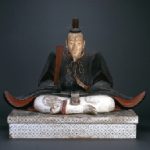
A Kokubunji, a state-supported provincial temple in the 8th century has thick woods in the grand rural districts. Mt. Okoyama (97m) is overlooking it.
There is the site of Chosokabe clan’s Castle in the Age of Provincial Wars in the 15th – 16th centuries, from which you can overlook the Kokubu River flowing below the hillsides facing south and the wet paddy extending from west to south.
This museum stands on the hillside of the Okoyamajo Castle’s site, which exhibits a sedentary statue of Chosokabe Motochika (1539 – 1599), a feudal lord, the 21st head of the Chosokabe clan in Tosa Province, and features the real figure of Motochika.
He was born and had grown up in this castle. And he approached the mission impossible to complete the unification of the Shikoku region, from this castle.
*It is currently closed until mid-April 2021, due to the renovation work.
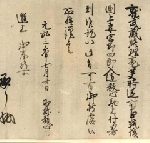
This temple was the starting point of Ashikaga Takauji (1305 – 1358), the founder of the Ashikaga Shogunate. He became a supreme ruler, with rousing himself again, after he defeated and fled from Kyoto, in the period of the Northern and Southern Courts (1336 – 1392).
The brother of Takauji and Ashikaga Tadayoshi (1306 – 1352), a general, built Ankokuji Temple and Rishou-to Pargodas to perform the salvation of the departed soul of Emperor Go-Daigo (1288 – 1339) and the emperor’s retainers, across the Provinces of Japan.
They aimed to heal the hearts of the devastated country and people by the battles in the the Northern and Southern Courts, at the suggestion of Musou Soseki (1275 – 1351), Rinzai Zen Buddhist monk and Kokushi, national Zen teacher.
This temple remains the oldest Kishinjo, the letter of donations, about Ankokuji Temple and Rishou-to Pargodas, in Japan, which came from Tadayoshi. This temple makes a harmony with the plains at the foot of Mt. Fukuchiyama.
It evokes the atmosphere of the period of the Northern and Southern Courts, which had elegance and rural beauty.
